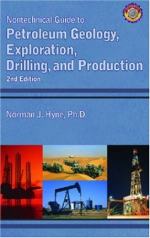|
This section contains 5,681 words (approx. 19 pages at 300 words per page) |

|
Nature of Petroleum
Crude oil generally appears as a dark-colored liquid. It is found underground under pressure and therefore wells must be drilled in order to bring it to the surface. Part of the crude oil is in the form of a gas. The latter separates out from the oil upon reaching the lower surface pressures, and is commonly referred to as natural gas.
Structurally, oil is made up of hydrocarbon molecules containing various combinations of carbon and hydrogen. The configurations of these molecules depend on the number and arrangement of the carbon atoms. These may be linked in straight chains, branched chains, and circular, or ring formation. With respect to molecular weight, the lighter molecules (fewer than 4 carbon atoms) tend to be gases; the medium weight molecules compose liquids; and the heavier (15 or more carbon atoms) are heavy liquids and solids.
Hydrocarbons are segmented into...
|
This section contains 5,681 words (approx. 19 pages at 300 words per page) |

|


